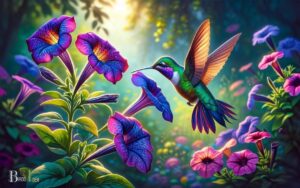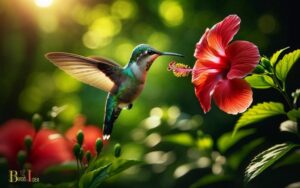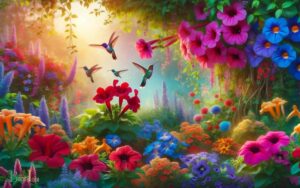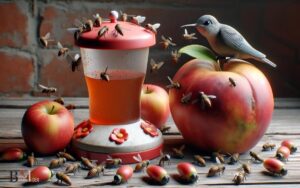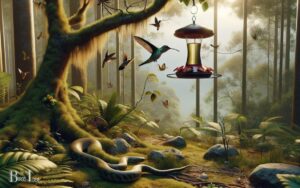Flower Seeds That Attract Butterflies and Hummingbirds!
Create a garden that buzzes with life by cultivating flower seeds that specifically attract butterflies and hummingbirds.
Opt for nectar-rich varieties like Milkweed, Zinnias, and Lupines to entice butterflies, while vibrant blooms such as Bee Balm, Salvia, and Petunias will draw hummingbirds.
By selecting these plants, you can transform your garden into a haven for these enchanting creatures.
Butterflies and hummingbirds are attracted to certain types of flowers due to their shape, color, and the nectar they produce.
To encourage their presence:
For example, a garden that includes Red Cardinal Flowers, which are known for their red tubular flowers that hummingbirds love, combined with Butterfly Bushes, which have conical clusters of blooms that butterflies flock to, will offer both nectar and visual attraction.
Enhance your garden’s appeal to winged wildlife with the right mix of flowering plants. Choose varieties that provide both vibrant color and a rich nectar source for an enchanting outdoor space.
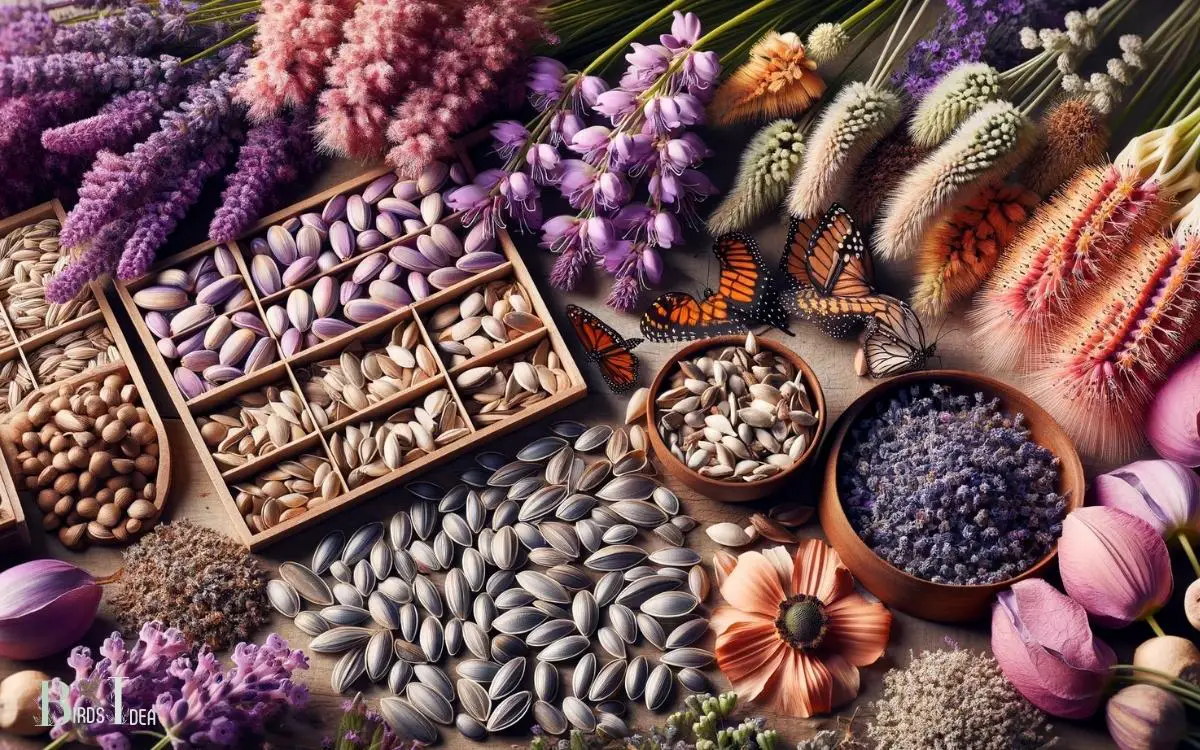
Key Takeaway
Benefits of Planting Butterfly and Hummingbird-Friendly Flower Seeds
Planting butterfly and hummingbird-friendly flower seeds provides a delightful way to attract these beautiful creatures to your garden throughout the spring and summer months.
By cultivating these flowers, gardeners can create a vibrant and inviting environment that supports the natural lifecycle of butterflies and hummingbirds.
Not only do these flowers add color and charm to the garden, but they also serve as a vital food source for these creatures, helping to sustain their populations.
Additionally, nurturing these plants can offer a sense of fulfillment as one witnesses the fluttering wings and graceful movements of these visitors. Furthermore, it contributes to the overall health and balance of the ecosystem.
Top Flower Seeds for Attracting Butterflies
When looking to attract butterflies to your garden, it is important to choose flower seeds that are known for their appeal to these delicate creatures.
Some of the top flower seeds for attracting butterflies include milkweed, coneflower, butterfly bush, black-eyed Susan, and verbena.
- Milkweed is especially important as it is the primary food source for monarch butterfly caterpillars.
- Coneflowers, with their vibrant colors and sturdy stems, are highly attractive to butterflies. The sweet-smelling nectar of butterfly bushes is particularly enticing to a variety of butterfly species.
- Black-eyed Susans and verbena are also excellent choices for attracting butterflies due to their bright blooms and high nectar production.
By planting these flower seeds, gardeners can create a welcoming environment that will attract and nourish beautiful butterflies.
Best Flower Seeds for Attracting Hummingbirds
When it comes to attracting hummingbirds, gardeners should consider planting colorful, nectar-rich blooms with tubular flower shapes.
These flowers are particularly attractive to hummingbirds due to their shape and nectar content.
Additionally, choosing native plant species can also enhance the appeal of the garden to these delightful birds.
Colorful, Nectar-Rich Blooms
Boasting vibrant colors and nectar-rich blooms, these flower seeds are ideal for attracting hummingbirds to your garden.
Hummingbirds are naturally drawn to bright, showy flowers with high nectar content, making these seeds a perfect choice.
Popular options include bee balm, salvia, and penstemon, which produce tubular-shaped blossoms in shades of red, orange, and pink.
These colors are particularly attractive to hummingbirds and make it easier for them to locate the flowers.
Additionally, the nectar produced by these blooms serves as a vital food source for these energetic birds.
By planting these flower seeds, gardeners can create a welcoming environment that not only enhances the beauty of their outdoor space but also provides essential sustenance for these delightful creatures.
Tubular Flower Shapes
Several flower seeds with tubular shapes are highly effective for attracting hummingbirds to a garden.
The tubular shape of these flowers allows hummingbirds to easily reach the nectar with their long, specialized beaks.
Here are three flower seeds with tubular shapes that are particularly appealing to hummingbirds:
- Salvia: Also known as sage, Salvia produces vibrant tubular flowers in various shades of red, pink, and purple. These colorful blooms are a favorite of hummingbirds and can bring a burst of energy to any garden.
- Penstemon: With its tall spikes of tubular flowers, Penstemon is a popular choice for attracting hummingbirds. The flowers come in a range of hues, from bright reds to soft pinks, making them a delightful addition to any garden.
- Columbine: Columbine’s unique tubular flowers, often in shades of blue, purple, or pink, are irresistible to hummingbirds. Their delicate appearance adds charm to any garden while providing a food source for these tiny, energetic birds.
Native Plant Species
Native plant species provide the best flower seeds for attracting hummingbirds to a garden. These plants have evolved alongside hummingbirds and have developed a symbiotic relationship with them.
Some native plant species that are particularly attractive to hummingbirds include trumpet vine, bee balm, cardinal flower, and red columbine.
These plants produce nectar-rich flowers with tubular shapes that are well-suited for the long, slender bills of hummingbirds.
Additionally, native plant species are well-adapted to the local climate and soil conditions, making them easier to maintain and more likely to thrive in a garden setting.
By incorporating these native plant species into their gardens, individuals can create a welcoming environment for hummingbirds while also supporting local ecosystems and biodiversity.
How to Plant Butterfly and Hummingbird-Attracting Flower Seeds?
When planting flower seeds to attract butterflies and hummingbirds, it’s crucial to consider the soil and sunlight requirements for each type of seed.
Proper watering and maintenance are also essential to ensure the health and growth of the plants, which in turn will attract these beautiful creatures.
Additionally, choosing the right seeds based on the specific preferences of butterflies and hummingbirds is key to creating a thriving and inviting garden.
Soil and Sunlight Requirements
The article discusses the soil and sunlight requirements necessary for planting flower seeds that attract butterflies and hummingbirds.
To successfully plant butterfly and hummingbird-attracting flower seeds, one must consider the following:
- Well-Drained Soil: Choose a location with well-drained soil to prevent waterlogging, which can be detrimental to the growth of these flowers.
- Full Sun to Partial Shade: Most butterfly and hummingbird-attracting flower seeds thrive in full sun, but some can tolerate partial shade. Understanding the sunlight needs of the specific flower seeds is crucial for their successful growth.
- Avoiding Competition: Plant the seeds in an area where they won’t have to compete with large trees or shrubs for sunlight, ensuring they receive the necessary light for healthy growth.
Watering and Maintenance Tips
Regularly water and maintain the butterfly and hummingbird-attracting flower seeds to ensure their healthy growth and vibrant blooms.
Water the seeds consistently, keeping the soil moist but not waterlogged. Use a watering can or a gentle spray from a hose to avoid disturbing the seeds.
It’s essential to monitor the moisture levels, especially during dry spells, and adjust your watering schedule accordingly.
Additionally, remove any weeds that may compete with the flower seeds for nutrients and water.
Deadhead the flowers regularly to encourage continuous blooming and prevent the plant from expending energy on seed production. Consider using organic fertilizers to provide essential nutrients for robust growth.
By following these watering and maintenance tips, you can create an inviting environment for butterflies and hummingbirds to thrive.
Choosing the Right Seeds
To ensure successful planting of butterfly and hummingbird-attracting flower seeds, carefully select high-quality seeds from a reputable supplier.
When choosing the right seeds, consider the following:
- Native Species: Opt for flower seeds that are native to your region, as they are well-suited to the local climate and soil conditions, making them more likely to thrive.
- Variety: Select a diverse range of flower seeds to provide a continuous bloom throughout the growing season, offering a consistent food source for butterflies and hummingbirds.
- Organic Options: Look for organic and non-GMO seeds to support a healthy ecosystem and avoid potentially harmful chemicals.
Maintaining Your Butterfly and Hummingbird Garden
Gardeners should regularly inspect their butterfly and hummingbird garden for signs of pests or diseases. It’s essential to maintain a healthy environment for these delicate creatures.
Here are some common pests and diseases to watch out for:
| Pests | Diseases | Signs of Infestation or Infection |
|---|---|---|
| Aphids | Fungal leaf spot | Curling or yellowing leaves |
| Caterpillars | Powdery mildew | White powdery patches on leaves |
| Spider mites | Bacterial blight | Brown spots with yellow halos on leaves |
By staying vigilant and addressing any issues promptly, gardeners can ensure that their butterfly and hummingbird garden remains a welcoming and safe haven for these beautiful creatures.
Creating a Welcoming Habitat for Butterflies and Hummingbirds
Inspecting and maintaining a pest-free environment is crucial for creating a welcoming habitat for butterflies and hummingbirds. This ensures that these delicate creatures can thrive and flourish in the garden.
Here are some essential tips for establishing a hospitable environment:
- Provide Shelter: Planting a variety of shrubs and trees can offer shelter from predators and harsh weather conditions for butterflies and hummingbirds.
- Offer Water Sources: Setting up a birdbath or shallow dish with fresh water can provide much-needed hydration for these winged visitors.
- Avoid Chemicals: Limit the use of pesticides and herbicides, as these can be harmful to butterflies and hummingbirds. Opt for natural pest control methods to maintain a safe and healthy environment.
Conclusion
Planting butterfly and hummingbird-friendly flower seeds is like creating a colorful, buzzing oasis in your own backyard.
With the right seeds and care, you can transform your garden into a haven for these delicate creatures.
So, grab your gardening gloves and get ready to watch as these beautiful winged visitors flutter and flit among your vibrant blooms. It’s a sight that will bring joy and wonder to your outdoor space.

